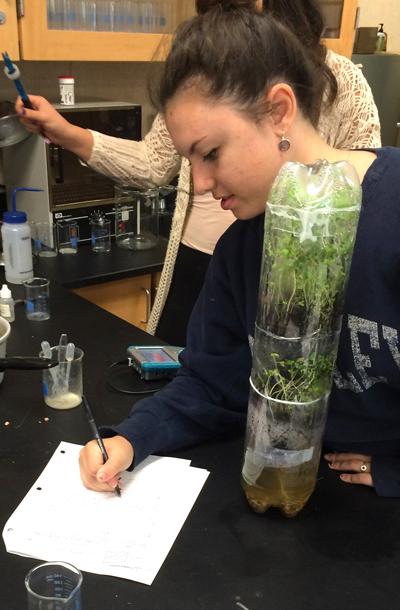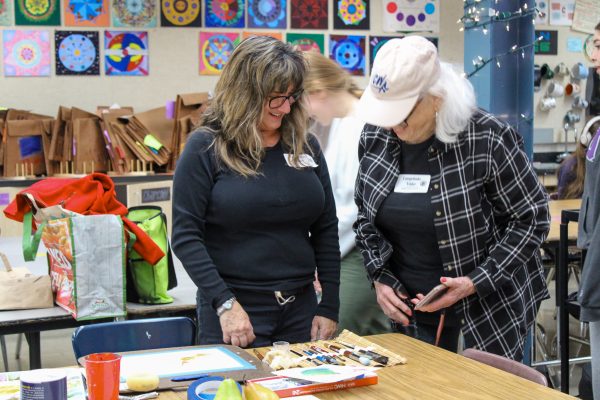Eco-Columns Test Cause and Effect
October 19, 2015
AP Environmental Science classes began a 2-month long Eco-column experiment on September 20 to test the function of an artificially created environment.
“We are studying nutrients cycles and what nutrients it takes to keep life going,” said AP Environmental Science teacher Jane Kelson. Creating testable experiments is one way of helping the class learn about this subject.
In groups of 4, students have built either aquatic or terrestrial ecosystems in plastic bottles, including plants and small animals. They formed hypotheses about what would happen to their bottles over time, set their bottles in the window where sun could warm them, and periodically recorded data about their ecosystems such as pH, soil moisture, and water clarity.
On a grander scale, this project is intended to teach students how “to design an experiment of how to test cause and effect, while controlling certain variables,” according to Kelson.
For some groups, unexpected changes occurred. Seniors Katherine Woolsey and Sarah Shipway, students in Kelson’s 4th period class, asked, “What is the effect of biogeochemical cycling on a closed ecosystem?” Their bottle includes 3 levels, an area with water, an elodea plant at the bottom and layers on top. They tested the effects the soils had on each of the other layers in the enclosed space, finding that the compost level spread out and attracted insects.
Another experiment was performed by seniors Dylan Thomas, Nicholas Erickson, Kevin Atkinson, and Daniel Meadows. They observed how the nutrients of the grass in the middle of their bottle affected the life on the bottom and top. Although the fish they put in the bottom lived, the fish on the top did not, which showed that nutrient cycles are vital to the survival of an animal. Throughout the experiment, the group had to reshape their ideas to fit with the physical proof. Senior Ricardo Betts said, “Our fish ended up dying after 1 day so now we are seeing how the nutrients of the dead fish affect the plants up top.”
Another group tested the effect of overpopulation on an ecosystem. Though most of the creatures within this eco-column died, they discovered one species was flourishing. “We did find something growing in there, something living. Mosquito larvae,” said junior Lily Partovi.





